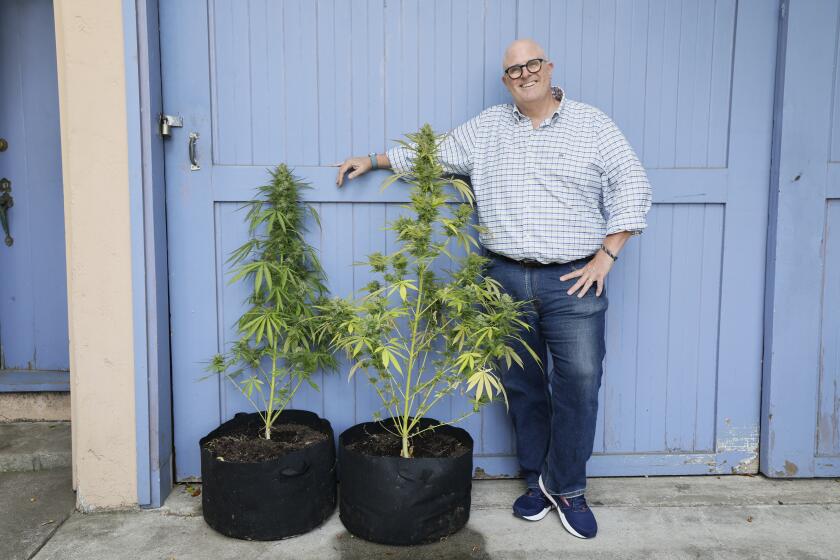Old Growth, New Garden
Scratch the surface of this new garden by Isabelle Greene and you’ll find--the old garden. Ancient oaks, hot-hued blooms and oddball succulents grew here when she first toured the Santa Barbara property several years ago, and they grow here now. “If I have a soapbox rant,” says Greene, a nationally prominent landscape architect, “it’s about preserving the historic parts of a garden. The old plants give you a homeland, a deeper meaning, and if you clear them out, that’s gone.”
So when she was called on to design and landscape a swimming pool, she had plants on the chosen site lifted, stored and then replanted after six months of construction. A branched euphorbia and a pair of boulders--all too big to move--determined the shape of the pool, a naturalistic 40-foot lake that sits, jewel-like, amid cacti, echeverias, scabiosa and fragrant gingers. Working with Carpinteria stonemason Pat Scott, Greene edged the pool with Arizona flagstone and then erected a rough, unobtrusive rebar security fence that quickly disappeared under clematis vines.
Nearby, Greene revamped and extended original gravel paths and added fire to existing flower beds. In the style of a bygone Santa Barbara cottage patch, pink ‘Simplicity’ roses overlook massed cannas and daylilies in day-glo reds and golds. “I usually champion the simple,” Greene acknowledges, “but here was this improbable agglomeration of stuff, these strong non sequiturs, and it all looked so voluptuous.” Some of the plants--such as the scarlet-splattered cannas--she can’t even put a proper name to; nor can she identify all the succulents that carpet a small slope below the tile-roofed, ranch-style house. Still, she delighted in the multitude of forms--juicy green jade plants, paddle-like opuntias, strappy yuccas. “I added hen and chicks, artemisia, Senecio vira-vira and other silver things,” she recalls, “and also purple iresine and yellow-blooming Mexican poppies. The effect is of starting in a dark grove and slowly moving into light.”
A former painter known for striking plant collages, Greene designs intuitively, both on site and at the drawing table. “If something excites my internal sensor, I go with it,” she explains. “Spontaneity is key; think too much, and you lose the playfulness.” At the same time, she says, it’s important to keep the big picture in mind. Here, large sweeps balance small vignettes; there are lawns for children, oaks to lounge under, paths to stroll and tucked-away spots with chairs and benches. “The point of a garden is to soothe and also excite you,” Green says. “In the midst of it, we can lose ourselves in the contemplation of wonderful details--like old plants that just stop you with the power of their character.”



